Why are mirrorless cameras increasingly popular?
Previously, photographers all need DSLR cameras - but that's not true anymore.The latest mirrorless cameras can easily overcome DSLRs in almost every important aspect.
Are you passionate about travel? Do you like capturing unique moments? But travel cameras have not made you satisfied because the image quality is not high, the ability to share is limited? Perhaps this is the time you should "think" through a mirrorless camera with a professional design, can change the type of tube and the ability to share photos instantly.
Why are mirrorless cameras increasingly popular?
- Difference between DSLR and mirrorless cameras
- Compact and stylish design
- Easy to take photos
- Share photos instantly
- Improvements
- Efficiency
- Lens
- Antique lens
- Other options
Difference between DSLR and mirrorless cameras
The difference between DSLR cameras and mirrorless cameras is mainly technical.
A DSLR camera has a mirror in front of the internal camera sensor to project light through the viewfinder. When you press the shutter button, the mirror will lift up to reveal the sensor and allow you to take a picture.
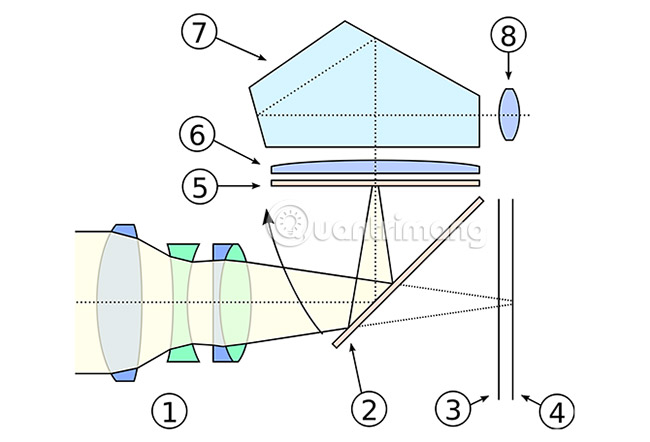
Mirrorless cameras do not have this mirror. Light passes through the lens and goes straight to the sensor. What you see through the viewfinder or the rear screen is exactly what the sensor is seeing, and thus accurately shows the image when you press the shutter button.
From smaller sizes, to more advanced features, with better performance, a mirrorless camera is the perfect replacement for DSLR cameras. Whether you are a travel hobbyist, a photography beginner or even a professional, this is why it's time to switch from a DSLR camera to a mirrorless camera .
Note : 'Mirrorless' is a technical word, describing any camera without a mirror, but this term is reserved for cameras with large sensors (Micro Four Thirds - M4 / 3 and above). Usually supports zoom lenses and replaceable lenses. However, some non-mirror cameras - like the Fuji X100 series - have fixed lenses.
Compact and stylish design
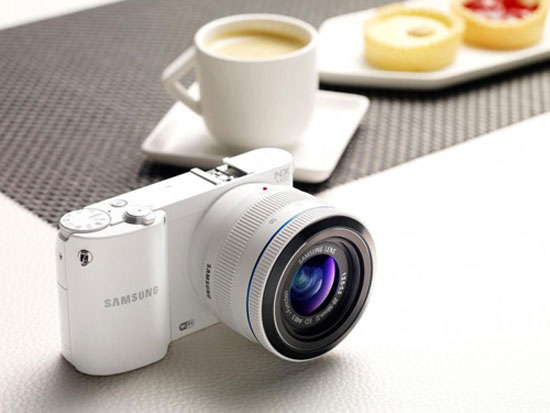
Non-mirror cameras are usually smaller in size than DSLRs but still ensure high image quality. This compactness is due to the fact that the viewfinder mirror is replaced with an electronic viewfinder via the LCD screen as on the Samsung NX1000 which is 3 inches. With such a compact size, you can comfortably walk along the street with some lenses depending on the needs of that day's photography. Not only that, the design is also designed more and more youthful to be considered a very stylish fashion accessory.
Easy to take photos
The beauty of the subject of photography is increasing. However, the traditional professional camera line is too cumbersome, manipulating the specifications such as shooting speed, aperture, white balance, ISO . is complicated. With a mirrorless camera to help, you can adjust the shooting mode to your liking with simple operations because the NX1000 is a smart camera, possessing various shooting modes Smart Auto to meet the requirements. the photographer's demand. This is considered a great end to the girls.
The photographer will be completely satisfied with the image quality with a huge number of " dots" up to 20.3 megapixels. It can also take very good photos even in low light conditions due to the high light sensitivity (ISO). The camera also focuses very quickly, shooting speed is high so users can shoot continuously and not miss any moments. You can also record Full HD quality anywhere. If you are intending to enter the path of professional photography, the Samsung NX1000 is considered an appropriate stepping stone for you.
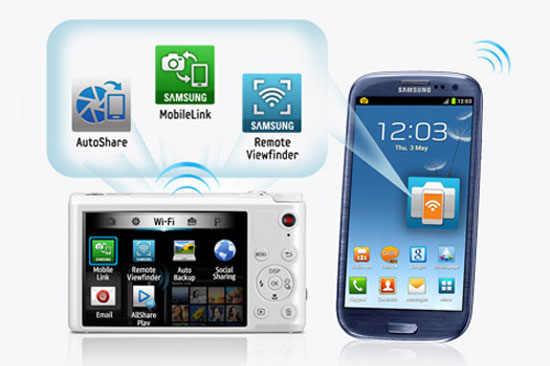
The remote finder feature also helps you capture the image of the whole group or yourself from watching the smartphone screen
Once you get used to the camera, you can upgrade yourself by buying different types of lenses exclusively for mirrorless models.
The NX camera lens set is quite rich, creating flexibility for each special shooting mode, such as taking landscape shots with 20mm F2.8 Wide Pancake and 16mm F2.4 Ultra-Wide, taking portraits with 85mm F1 .4 Premium Portrait, close-up of flowers and insects with Omm Macro 60mm F2.8 . Mirrorless cameras are equipped with up to 12 lenses to meet all the shooting needs of users.
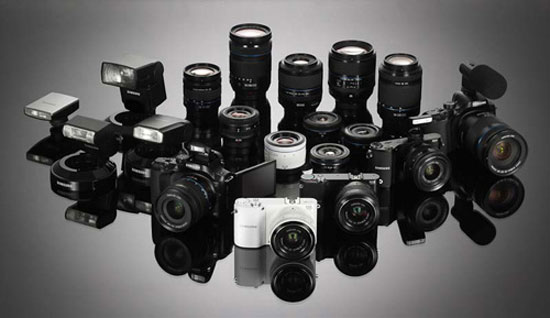
Lens and accessories of NX1000 can appeal to anyone who has just entered the path of professional photography
Share photos instantly
Today, shooting is to share "now and always" for friends to " like" and comment is a general trend. Therefore, Samsung does not forget to equip the Wifi feature for its mirrorless cameras. In addition to supporting posting photos on the community network, the NX1000 also has the ability to connect and share photos with laptops, desktops, tablets . Especially, with smartlink "hotkeys" , users do not need sports. Complicated work and images are shared instantly to keep you excited about your photographic works.
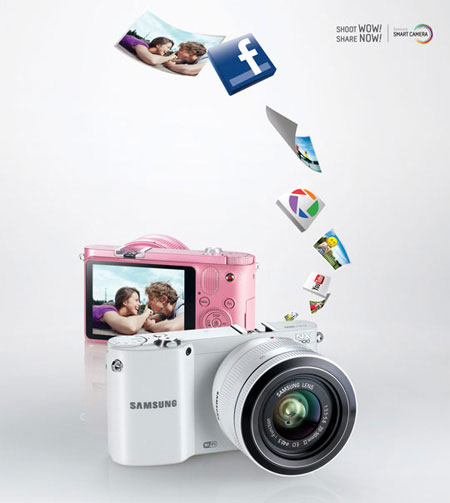
The NX1000 is able to share instantly via Wifi connection
There are many reasons to own a mirrorless camera like the Samsung NX1000. This model has the advantage of the dedicated camera series and the compactness of the travel machine, combined with sharing features, has made a smart camera as you expect.
Beautiful moments sometimes only meet once, do not wait to capture and share the moments that surely friends must admire when seeing it on Facebook. Samsung NX1000 will step by step help you enter the path of professional photography.
Improvements
If you have any interest in cameras and camera technology, then mirrorless cameras are the only option today.
Even the previous 'giants' of the DSLR world, such as Canon and Nikon, were also forced to change and capture this area of the market, because innovation was almost unstoppable.
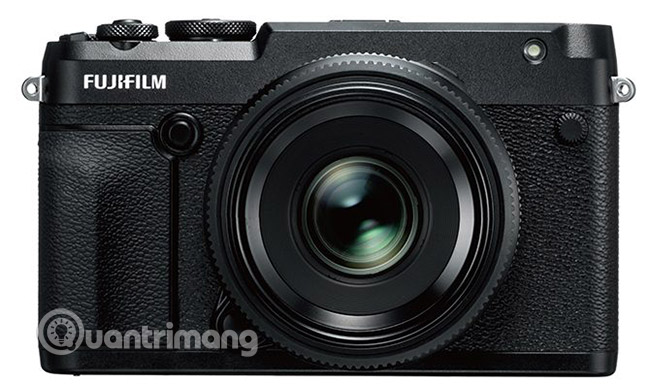
So now there are professional full-frame mirrorless cameras on the market like Canon EOS R, with more than 5000 focus points, plus Nikon, Sony and even Panasonic models. And Fuji has surpassed all competitors with its compact size, medium format GFX 50R.
Improvements to mirrorless cameras are taking place quickly. Typical can be mentioned as:
- Electronic view, high resolution and fast refresh rate, showing 100% scope of observation.
- Live view mode (ie you can take photos with the LCD screen behind).
- Combined view (the best combination of optical and electronic viewfinder).
- Wi-Fi to upload photos easily.
- Photo support features, such as face recognition.
- Intelligent scene mode, such as HDR or low-light photography support.
- Electronic shutter creates an extremely fast shutter speed that allows you to shoot unlimitedly under sunlight.
- Articulated screen, to fit when taking photos at different popular tourist spots.

Some of these features have also begun to appear in DSLR cameras, but the mirrorless camera has already embraced the trend and incorporated mainstream features.
Non-mirror cameras are controlled by more software than DSLR cameras. This may be one of the reasons why improvements are easier to distribute on mirrorless cameras than DSLR cameras. It can also explain why mirrorless cameras often receive larger firmware updates, as well as being constantly upgraded and adding newer features.
Efficiency
The argument against mirrorless cameras is that their performance is inferior to those of DSLRs. Slow focus, worse image quality, poor battery life and ergonomics do not allow for long shots.
The view of battery life is correct. A typical DSLR can take pictures 2-3 times longer than a mirrorless camera, before needing to recharge.
However, the rest is not accurate.
Focus speed has improved a lot over the years, to the point that it is even more superior to popular DSLRs. For example, the Sony a6500 has the fastest autofocus speed among crop sensors, including 425 autofocus points in the entire sensor, compared to 51 on the Nikon D7500.
The advantages in areas such as sports photography are still possible for full frame DSLR cameras (although Sony A9 is targeted directly to this market share) but those who do not need to worry about taking definition.
For image quality, mirrorless cameras have never produced worse products than DSLR cameras. The sensors have similar sizes and capabilities (and some Nikon DSLRs even use Sony sensors). All mirrorless cameras have enough quality lenses to cater to all users at different levels.
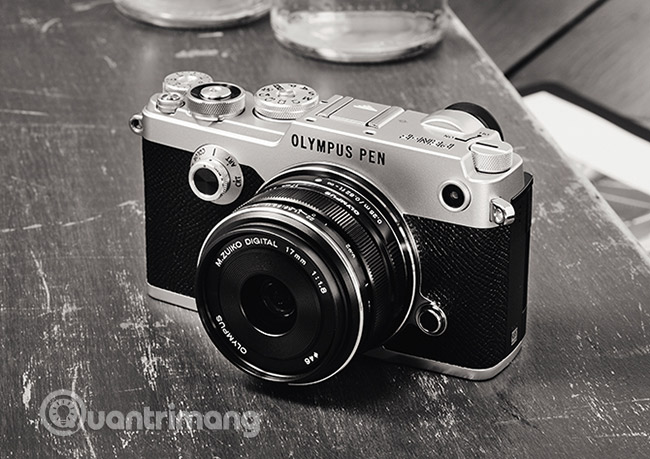
Ergonomics is also not an obstacle. Cameras from Fuji and Olympus are equipped with external buttons and buttons, allowing you to change settings without taking your eyes off the viewfinder. Flip mirrorless cameras catch up with DSLRs by providing more weather resistance, so you can take pictures in all conditions.
Honestly, mirrorless cameras look better. Who will choose a bulky DSLR when you can have an Olympus PEN-F (CA, UK) instead?
Lens
When the mirrorless camera first debuted in the market, its lens was a weakness. It takes a long time for a manufacturer to build a system from scratch.
After a decade, this problem has ceased to exist. Micro Four Thirds, Sony, Fuji, and other manufacturers all have lenses suitable for all use cases, at all prices.
Antique lens
More interesting is that you can use a mirrorless camera with an antique lens. With a simple, inexpensive converter, you can attach any antique film camera lens to a mirrorless camera. Look to buy such an old style lens and see how much it can extend your photography options!
You will have the opportunity to work with old Leica or Zeiss lenses.
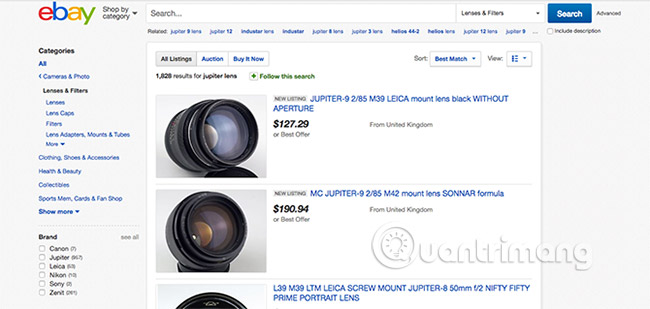
Most mirrorless cameras use a feature called "focus peaking" that allows you to work with manual lenses (Focus peaking is a manual focus assist tool. It highlights areas focus, so you can focus faster and not miss important moments). This highlights the areas with the highest contrast of the image - representing the sharpest edges - in bright colors. The brighter the image, the better the focus is.
Other options
Unless you are a professional with very specific requirements, it is difficult to have a reason to use a DSLR at this time. Mirrorless cameras are smaller, lighter, more flexible, and work better than DSLR cameras.
The variety of models also ensures you will be able to find the right product for your needs. You only have to spend about $ 500 to shoot 4K videos and take great quality photos.
Are you ready to make the transition from a DSLR camera to a mirrorless camera?
Wish you can choose the right product!
See more:
- 5 "peak" mirrorless cameras in Vietnam
- Mirrorless cameras support good video recording
- Top popular DSLR cameras
You should read it
- New features on iOS 10 Camera app
- Funny photos of the design of iPhone 11
- A small feature that makes taking photos easier on your Samsung device may not be known
- How to take a snapshot on Samsung Galaxy J7 Pro
- Review of the Canon EOS 90D camera
- How to hide 'perforated' camera on Samsung Galaxy S10 series
- Samsung Galaxy S20 encountered a selfie camera error, photos may be blurred and not clear
- How to Transfer Photos from Camera to Computer Without Software
May be interested
- The most popular types of cameras that don't need wifi
 cameras that don't need wifi: top 4 most popular anti-theft cameras that don't need wifi today, attracting the attention of many users.
cameras that don't need wifi: top 4 most popular anti-theft cameras that don't need wifi today, attracting the attention of many users. - Surveillance camera: Should buy wired or Wi-Fi?
 currently on the market there are many types of surveillance cameras in all shapes, sizes and different brands. however, it can be classified into two basic branches: wi-fi camera and wired surveillance camera system.
currently on the market there are many types of surveillance cameras in all shapes, sizes and different brands. however, it can be classified into two basic branches: wi-fi camera and wired surveillance camera system. - 10 tips for taking beautiful photos with digital cameras
 no need for dslrs at great prices, just with the popular digital camera (kts) in hand, you can completely record the best moments of your family and friends this summer. let's explore 10 photography tips with kts!
no need for dslrs at great prices, just with the popular digital camera (kts) in hand, you can completely record the best moments of your family and friends this summer. let's explore 10 photography tips with kts! - Fast experience Fujifilm X-T4: What's good and worth upgrading compared to previous generations?
 with a selling price of $ 200 higher than its predecessor (at the time of launch), is the fujifilm x-t4 worth the upgrade?
with a selling price of $ 200 higher than its predecessor (at the time of launch), is the fujifilm x-t4 worth the upgrade? - How to edit smartphone photos to look like film
 film photography is a favorite style of photo editing for many people. while files from mirrorless cameras are more commonly used, you can also create these types of edits with photos on your smartphone.
film photography is a favorite style of photo editing for many people. while files from mirrorless cameras are more commonly used, you can also create these types of edits with photos on your smartphone. - 6 tips to help take better night photos with a popular digital camera
 if you have ever taken night photos with a popular digital camera, you must have been disappointed many times with the photos taken.
if you have ever taken night photos with a popular digital camera, you must have been disappointed many times with the photos taken. - Things to know before installing a wired security camera system
 there is the fact that wired security cameras are always much more reliable and reliable than wi-fi wireless security cameras.
there is the fact that wired security cameras are always much more reliable and reliable than wi-fi wireless security cameras. - Basic guide when buying digital cameras
 many young people and families now need to buy cameras to keep memorable moments of life. so how to buy the camera as you want?
many young people and families now need to buy cameras to keep memorable moments of life. so how to buy the camera as you want? - Top digital cameras for children
 finding the best camera for your child can be a great way to help them get creative while having fun – and it's never too early to start!
finding the best camera for your child can be a great way to help them get creative while having fun – and it's never too early to start! - 5 best DSLR cameras of 2024
 the dslr camera is an indispensable item for photographers. with optimal and solid build quality, ultra-fast autofocus and a long list of functions catering to all types of photography, dslrs are still the most popular cameras today.
the dslr camera is an indispensable item for photographers. with optimal and solid build quality, ultra-fast autofocus and a long list of functions catering to all types of photography, dslrs are still the most popular cameras today.










 Cydia Impactor 0.9.50 is available, fix errors when extracting IPA files on Windows computers
Cydia Impactor 0.9.50 is available, fix errors when extracting IPA files on Windows computers Three critical holes in Linksys routers, hackers can take advantage of hijacking
Three critical holes in Linksys routers, hackers can take advantage of hijacking Apple allows users to download all data on iPhone
Apple allows users to download all data on iPhone ICANN successfully changed the DNSSEC KSK key to enhance the security of the domain server system
ICANN successfully changed the DNSSEC KSK key to enhance the security of the domain server system Vertu Aster P officially launched, starting price of 5000 USD
Vertu Aster P officially launched, starting price of 5000 USD Adobe's new tool can turn face images into animated images at a glance
Adobe's new tool can turn face images into animated images at a glance